Embarking on a full-time RVing journey can be an exciting and fulfilling adventure, offering a unique blend of freedom, exploration, and minimalistic living. However, you may be wondering, how much does full-time RVing cost? The answer may surprise you!
Our RV living family of three has been full-time RVing for 8 years now and will share with you our cost of living full time in an RV per month.
Spoiler alert! What you budget on paper isn’t even close to the cost of living full time in an RV in reality.
Key Takeaways: How Much Does It Cost To Live In An RV
- The cost to live in RV full time is influenced by where you plan to stay, how fast you travel, the types of activities you want to enjoy on the road, and the type of RV you choose to live in.
- RV life cost for travel and accommodations include gas prices and campground fees.
- RV maintenance and repairs, living expenses, vehicle and RV payments, and insurance coverage are large factors in planning and budgeting for a successful full-time RVing experience.
- Trust us when we say that full-time RV living monthly costs on paper don’t compare to costs in reality!
(This article contains affiliate links. When you purchase using these links, I earn a small commission at no additional cost to you. This helps to keep the content on this site free which is a win win for both of us! See the Disclaimer.)
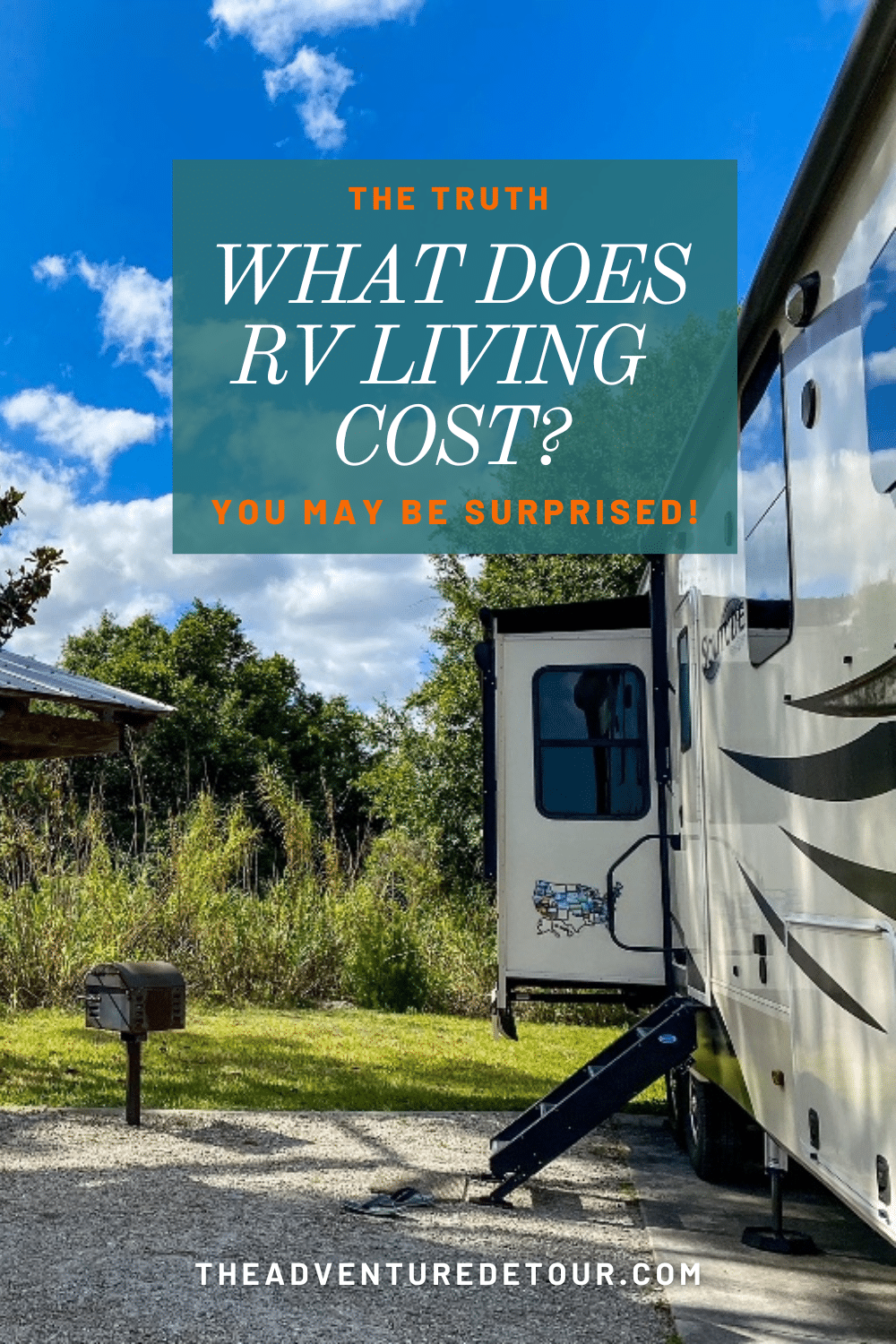
Understanding Full-Time RVing Costs
Understanding the financial aspects of this lifestyle is key for anyone considering hitting the open road.
The total cost of full-time RVing varies greatly depending on factors such as travel habits, lifestyle choices, vehicle type, speed of travel, where you choose to stay, activities, and more.
While it’s helpful to look at other’s full time RV living expenses, your cost of living in an RV will be unique.
The living in an RV full time cost includes travel and accommodation expenses, such as gas prices, campground fees, or boondocking options.
Living expenses on the road, such as groceries, utilities, loan payments/car payment, membership payments, and insurance, also play a role in the overall full time RV budget.
Additionally, the type of RV being used will likely affect the cost of RVing full time, with some budget RVers spending around $2,000 per month while others spend upward of $8,500 per month.
We quickly realized during the first few months on the road that what we budgeted on paper didn’t account for the many surprise costs that seem to pop up every month on the road.
RV Expenses
Initial RV Purchase and Financing
When considering, how much does it cost to live in an RV, it’s essential to take into account the cost of purchasing an RV.
Your RV type and price greatly effects your annual cost of full time RV living.
How much does an RV cost? RVs come in a wide range of prices, starting from $10,000 and reaching up to $400,000 or more for luxury models.
Your RV type, such as travel trailers, motorhomes, or fifth wheels, will also impact the cost.
If you cannot pay for the cost of an RV to live in upfront, financing options are available, leading to fixed monthly installments spreading over several years.
Unfortunately, RVs depreciate very quickly, and you can quickly find yourself upside down on an RV loan.
Consider not getting an expensive RV and instead using the proceeds from downsizing to buy an RV in cash or finance the least amount possible so you don’t end up in a 20-year RV loan paying more than the RV is worth. Ouch!
We sold our home and almost all of our belongings when we launched into full-time RVing back in 2015.
We used the proceeds from our house and from selling both of our vehicles to pay cash for a fifth-wheel and dually truck to become our adventure home on wheels.
While we realize that this isn’t an option for everyone wanting to start the full-time RVing lifestyle, consider buying a used RV, becoming a one-vehicle family, or spending the least amount possible on the RV so you have the funds available for traveling and activities.
RV Loan and Debt Payments
RV loans generally have repayment periods ranging from 10 to 15 years, however many now are also extending up to 20 years.
The interest rates vary based on factors such as your credit score, the loan amount, and the RV’s age.
Making a substantial down payment can reduce your monthly payments, making it more manageable for your budget.
It’s crucial to keep in mind that prolonged repayment periods with lower monthly payments will lead to higher overall costs due to interest.
It helps to plan your RV loan and debt payments in a way that works for your financial goals as part of full-time RV lifestyle.
You can become RV poor in the same way that you can be house poor with a large monthly RV payment.
Does Going Full Time Hurt Your Chances Of Getting An RV Loan? Pro Tip Regarding RV Financing
RV financing for full time RVers is much harder to get than most other types of loans due to the extreme depreciation.
It greatly helps if you purchase your RV while you still own your home and have your current job.
You can always pay the loan off after selling your house. You also want to think twice about sharing with the finance company that you are planning to live in the RV.
While you DO want to let the insurance company know that you will be living in RV full time, sharing this with the finance company can cause issues in the loan process.
RV Insurance And Extended Warranties
Full-time RVers must also factor in RV insurance costs, which can vary with each insurance provider and depend on factors such as the RV type, its value, and your location.
You absolutely MUST HAVE an RV insurance policy specific for RV living.
Sure, the average cost of RV insurance on a regular RV policy is cheaper, but it doesn’t have the proper coverage for RV living!
A full-time RV insurance policy coverage is a bit more like a homeowner’s policy.
Full time RV living insurance usually covers you if people get hurt in your campsite and it has additional coverage for your belongings since most of what you own will be with you in your RV.
Full-time policies can also offer additional coverage for emergency hotel stays if your RV home is in the shop for repairs and you need a place to stay.
Yes, this happens! We have been stuck in hotels 4 times so far in 8 years of RV living for RV repairs.
Your RV insurance is an important item in your full time RV living cost.
Additionally, obtaining an extended RV warranty can give you peace of mind while minimizing unexpected expenses in your full time RVing budget.
Extended warranties can cover various components, such as the RV’s appliances, electrical systems, and plumbing systems.
Many RV extended warranties aren’t worth their salt. Ensure that you fully understand the warranty clauses and exclusions before purchasing it to avoid disappointment in the long run.
We would only purchase an extended RV warranty that includes mobile repair services, which is one of the best ways to stay in your RV while the work is done.
For a reputable RV warranty company that includes mobile repairs, take a look at Wholesale Warranties. Wholesale Warranties is an extended RV warranty available for both new and used RV models.
You may choose to pay for an RV warranty up front or monthly as part of your budget for full time RV living.
Check out Wholesale Warranties for new and used RVs + mobile repair
RV Roadside Assistance
I can’t stress enough how important it is for full time RV travelers to get a good roadside assistance plan that is specific to RVs.
Your full time RV insurance cost may include roadside assistance, but it has been our experience that they don’t often have the resources to handle towing large RVs.
Consider an RV-specific roadside plan like Good Sam Roadside Assistance. I hope you won’t ever need to use it, but it’s important to have.
We had a scary RV situation on the side of the road, and our insurance company’s roadside policy was worthless.
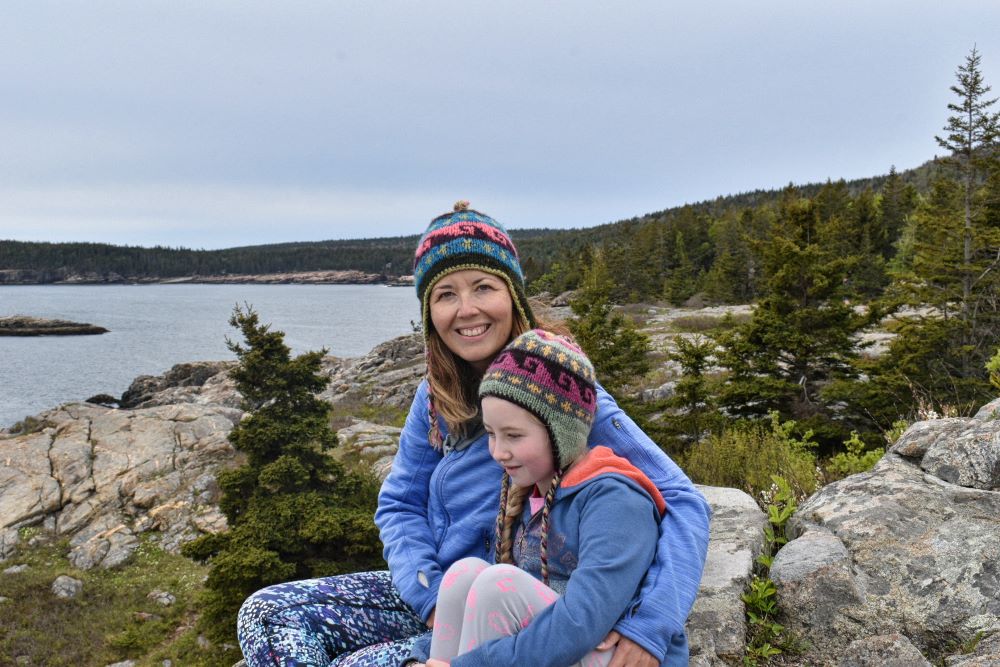
RV Maintenance and Repairs
Folks, it’s not if your RV will need repairs but when. Sometimes RVs need significant repairs monthly.
It’s the largest hidden and unpredictable cost of living in an RV. The more you travel in your RV, the more it will break.
While some brands of RVs claim they are rated for full-time living, the honest truth is that RVs don’t hold up well to daily use.
Our RV is rated for daily living, but frequent repairs are the black eye of the industry and a fact of RV living.
Going into this lifestyle, it’s a good idea to be prepared, and budgeting for RV repairs and maintenance monthly will help you to enjoy your journey versus stressing out over expenses.
Importance of Regular Maintenance
Staying up on regular maintenance can really help prevent some of the larger repairs.
Adhering to a consistent maintenance schedule helps prevent breakdowns, improves vehicle longevity, and avoids costly repairs.
For example, checking tire pressure, fluid levels, cleaning and lubricating slide tracks, and conducting inspections of seals and appliances can significantly reduce the likelihood of unexpected issues.
If you do nothing else for maintenance, stay up on your RV roof maintenance and RV tires.
Those two issues can lead to significant damage and even loss of your RV home if your roof leaks and you end up with mold.
Check the roof frequently and get the best tires possible to keep your RV in good condition.
Standard Maintenance Expenses Include:
- Oil changes and filter changes
- Tire rotations and replacements
- Brake services
- Propane expenses for heating, cooking, and refrigeration
- Battery replacements
- Awning and slide topper repair
- Air conditioner cleaning and maintenance
- RV slide track lubrication and adjustment
Unexpected Repair Costs
Despite regular maintenance, unexpected repair costs will still arise during full-time RVing.
RV repairs can vary in price, with some dealerships charging up to $200 per hour for labor and mobile repair running from $150-$200 on average per hour. That is on top of the cost of supplies.
It is crucial to have an emergency fund set aside for potential repairs. Moreover, knowing some basic troubleshooting techniques can help save on repair costs or even prevent certain issues from escalating.
Unexpected repairs can range from minor fixes to significant overhauls and can be a HUGE RV cost per month.
Full-time RVers should set aside a portion of their monthly budget for possible repairs, such as fixing leaks, replacing appliances, or resolving electrical and plumbing issues.
Also, have an emergency RV budget for hotel stays in case you find yourself without your RV during repairs or after an accident.
Food and lodging quickly ads up, and many repair shops are less than speedy about getting the RV you live in back to you. This is the raw truth!
I hope you can see that understanding the costs of RV ownership goes beyond the initial purchase price.
Full-time RV living involves ongoing expenses such as loan repayments, insurance coverage, maintenance, and repairs.
By considering these factors as well as unexpected monthly expenses, you can create a realistic budget and enjoy your RVing adventures while managing the financial aspects of this lifestyle.
Don’t overlook these large full time RV cost of living budget items!
Travel and Accommodation Expenses
RV Living Gas Prices and Fuel Economy
When considering the cost to live in an RV, one of the primary expenses to account for are gas prices and fuel economy.
The quantity of fuel consumed largely depends on the size and type of the RV, travel style, and frequency of travel.
Gas prices also vary from state to state and typically spike around holiday weekends, so budgeting for these fluctuations is essential.
Having an energy-efficient RV and planning travel routes to minimize fuel costs is beneficial.
Tips To Save Money On Gas RVing:
- Travel slower/stay in each location longer
- Avoid towing or driving your RV through the mountains
- Stay within one general area versus crossing the whole country
- Keep your tires properly inflated
- Avoid overloading your RV
- Watch for gas efficiency when purchasing an RV or towable
- Get a gas discount card such as Good Sam or TSD Fuel Card for the best deals on diesel at truck stops
- Expect to pay much higher gas prices on the West Coast
Propane Costs
In addition to gas, full-time RVers also have propane expenses for heating, cooking, and running the refrigerator off-grid.
The cost of propane varies depending on factors such as location, season, and usage.
Regular maintenance and monitoring of propane systems are crucial to ensure safety and efficiency.
Careful planning and finding the best deals on propane can help reduce this living in an RV cost.
Tips To Save Money On Propane:
- Skip refilling at the campground, where the prices are often higher
- Fill propane at a hardware store or local farm store
- Use an electric space heater or RV fireplace versus the RV furnace
- Only run fridge on propane when absolutely necessary
- Cook using an electric skillet, pressure cooker, or all-in-one appliance like the Foodi to save on propane
- Run hot water heater on electric if you have the option
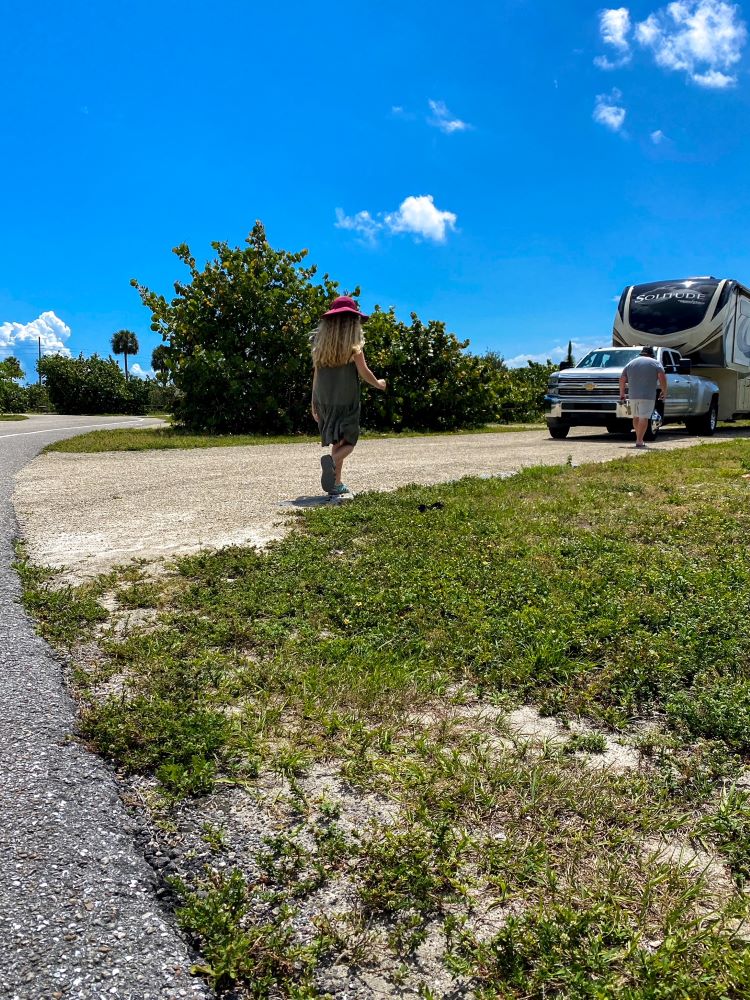
Price Of Campgrounds and RV Parks
Full-time RVing also usually involves staying at campgrounds and RV parks, which can add up to as much as a house payment in some areas if you don’t use discounts and memberships to save money.
The cost of RV sites depends on the area, amenities available, and the park’s quality.
Some campgrounds offer cheap parking, while others charge upwards of $150 per night.
Full-time RVers need to consider their amenity personal preferences and park location when planning their budget, as RV parking is one of the biggest expenses in RV living.
Tips To Save Money On Campgrounds:
- Stay longer & take advantage of weekly or monthly campground rates (stationary RV living cost is less)
- Choose more rural camping locations to avoid more expensive options near tourist attractions
- Visit during the weekdays and the shoulder camping season
- Avoid holidays when private campgrounds are often the highest prices of the year
- Choose to stay in cheaper campgrounds like state parks, national parks, county parks, and COE campgrounds
Seasonal Campground Prices
Seasonality plays a significant role in campground prices, as peak seasons typically have higher fees.
RVers can reduce full time RV living monthly costs by traveling during off-peak times.
As a bonus, it’s also much easier to get campground reservations in the off-season.
Campground reservations have become a huge challenge in the last few years. Grab our FREE GUIDE with all of our tips and tricks to snag even the toughest campsite reservations!
Get your Reservations Tips FREE GUIDE HERE!
One of our secret hacks for booking sold-out campsites in state and national parks is Arvie.
Suppose you didn’t make reservations far enough in advance, and the campground is booked solid. Whoops!
No worries! Arvie searches for campsite cancellations and also books the reservation for you. It’s been a game-changer for our family!
Get your Arvie FREE TRIAL HERE + 10% off to check it out for yourself!

Discount Camping Memberships
Camping membership programs and annual discount cards are available to full-time RVers, providing access to reduced rates at participating campgrounds.
The savings can be significant if you research and choose a membership or discount program that meets your travel style and preferred RV destinations.
Top Camping Discount Programs To Save On RV Parking:
- Passport America – save 50% off campground rates
- Camper’s Card – save 10-50% off camping rates
- Good Sam – save 10%
SAVE 15% off Campers Card!
Best RV Memberships To Save On Full-Time RVing Campsite Fees:
- Harvest Hosts – yearly membership that allows free overnight stays at participating farms, breweries, wineries, and golf courses
- Boondockers Welcome – yearly membership that provides access to longer stays at free boondocking and dry camping locations offered by private land owners and farms
- Thousand Trails, RPI, and Coast To Coast – like a timeshare for camping, purchase a membership and pay an annual fee to stay at included resorts across the united states, can offer big savings in the long run
SAVE 15% off a Harvest Hosts Membership!
Boondocking and Dry Camping
For those looking to dramatically lower the cost of living in an RV full time, consider staying for free by boondocking or dry camping. Free camping locations offer a less crowded, fewer rules, and more natural alternative to paid campgrounds and RV parks.
This type of accommodation typically involves staying in remote areas or public lands with no hook-ups or amenities.
While boondocking can significantly lower travel expenses, it also requires more self-sufficiency, planning, and resources such as solar panels and portable toilets.
You may also have additional fees for filling your fresh water tank and dumping your black tank.
A great way to find additional boondocking locations on privately owned land is to join the annual membership Boondockers Welcome.
Top Resources To Find Boondocking Locations:
- The Dyrt
- Campendium
- Boondockers Welcome
SAVE 15% off Boondockers Welcome!
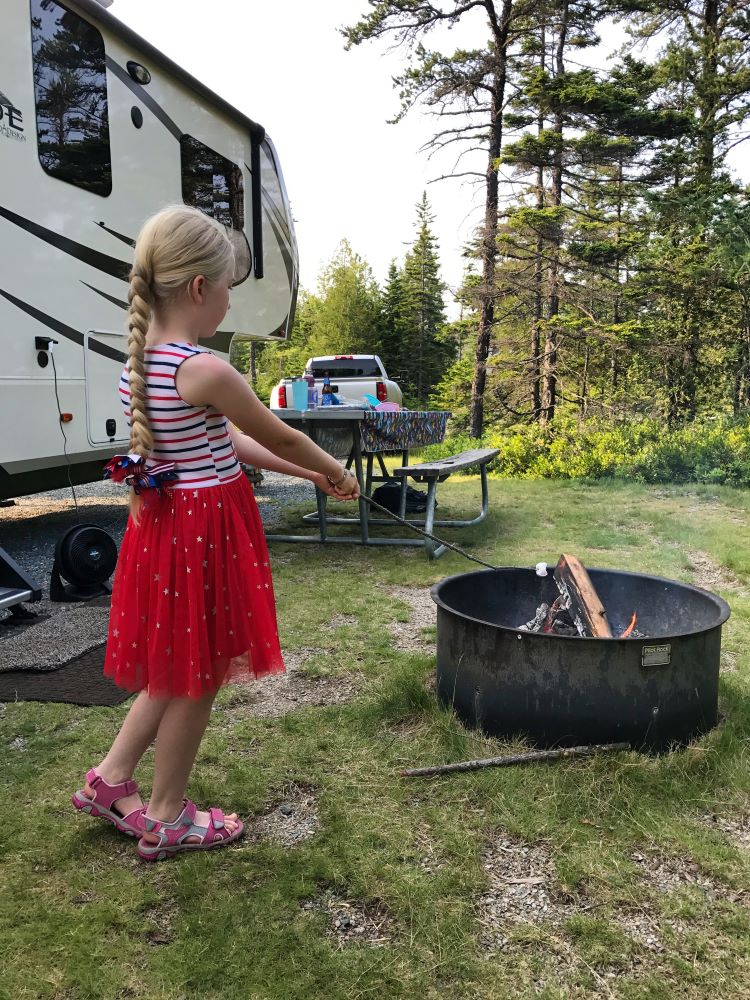
Living Expenses on the Road
When considering the cost of full time RVing, it’s important to account for various living expenses that come with this lifestyle.
In this section, we will explore some common costs associated with full-time RV living, including food and dining, internet and connectivity, phones and communication, health care and insurance, and entertainment.
Groceries And Eating Out
For full-time RVers, food expenses can vary greatly depending on individual preferences and habits.
Some may prefer cooking most meals in their RV, while others may enjoy eating out more frequently.
A good rule of thumb is to allocate around 20-25% of your total budget for food. This includes groceries, dining out, and any special meals or treats.
To help save on food costs, consider meal planning, shopping sales, cooking in bulk, and limiting eating out.
Most people that travel in an RV full-time spend more on food than when living in a house. Why?
Grocery prices vary across the country in new places you visit. It’s tricky to know how much money you will spend in different regions for similar products.
You also don’t always have a good selection of discount stores where you are staying. If you often stay in rural locations, it makes it even harder to find discount stores nearby.
We shop at Costco and Aldi when we are staying near the city. If we are in rural locations, then we try to grab most of our groceries at Walmart for savings.
Rural grocery stores can be more expensive. For example, when we have wintered down in the Florida Keys, food and gas prices are significantly higher than on mainland Florida.
Tips To Save Money On Food On The Road:
- Avoid eating out
- Stock up at discount stores like Costco, Aldi, and Sam’s Club when you are in town
- Pack picnic lunches and snacks to have when you are out exploring
- Grill and cook at home to lower the cost to RV full time
Internet and Connectivity
Staying connected on the road is essential for many RVers, particularly those who work while traveling.
Internet costs can vary based on the provider and plan selected.
Options for connectivity include using a personal hotspot, subscribing to a dedicated mobile hotspot plan, or satellite internet such as Starlink.
Expect to pay anywhere from $50 to $150 per month for internet and connectivity, depending on the level of service required.
If reliable internet is required for work or school on the road, never rely on campground Wi-fi. Always have your own source of internet.
We need the internet for our business as we travel.
We use Starlink Internet as our primary unlimited data plan connection. We also have T-Mobile hotspots on our phone plan as a backup.
Why do we travel with 2 sources of internet?
Cellular provider internet can be very hit or miss in rural areas, the mountains, or packed peak season campgrounds where the network can get congested.
Starlink is great, but only when you have a clear North sky. If you camp in very wooded areas, Starlink isn’t always reliable.
Since we spend a lot of our time on the road in heavily wooded state park campgrounds, we need a backup for the Starlink.
Phones and Communication
Maintaining communication while on the road is an important thing for safety and convenience.
Phones and communication expenses can average around $50 to $100 per month, depending on the provider, plan, and specific phone usage.
Consider choosing a carrier with the best nationwide coverage and researching any roaming fees that may apply while traveling.
We have used both Verizon and T-Mobile during our time on the road. We have found that for us, Verizon had better coverage, especially out west.
Get your Reservations Tips FREE GUIDE HERE!
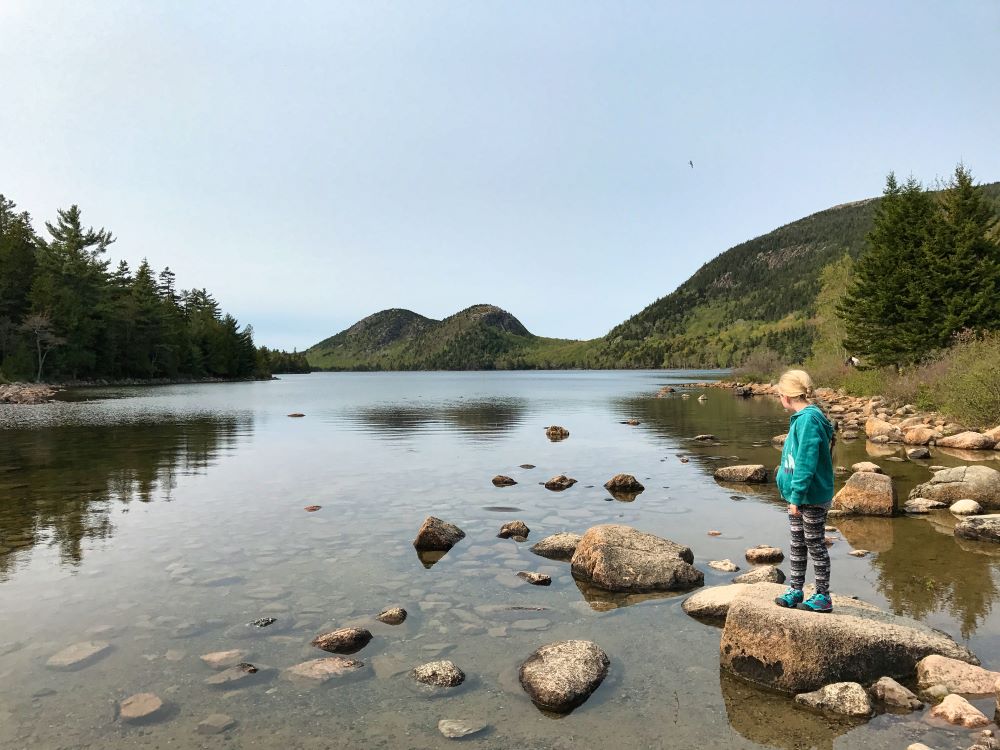
Health Care and Insurance
Health insurance and RV insurance expenses must also be considered in a full-time RV living budget.
Costs for RV insurance will vary based on factors such as the type of RV, driving record, and coverage chosen.
Expect to pay at least $900 per year for a good full-time RV policy.
Important Considerations For Full-Time RV Insurance:
- Make sure you get a policy specific to RV living
- Increase the contents coverage to make sure all of your belongings are covered
- Upgrade emergency hotel coverage to make sure you have a place to stay if your RV is damaged in an accident
- Consider RV replacement so you aren’t hit with depreciation if your RV is ever totaled in an accident
For health insurance, check out different options like an ACA plan, private plans, or healthcare-sharing ministries.
Just make sure that whatever plan you decide to go with has coverage for care in any state.
We have used Liberty Healthshare, and ACA plans for our family while traveling.
It is helpful to get a policy that includes telehealth so you can meet with medical professionals wherever you may be located.
Entertainment
While full-time RVing offers many free or low-cost entertainment opportunities, such as hiking and exploring nature, it’s important to budget for additional recreational activities.
Examples include visits to attractions, entertainment subscriptions, or events.
Entertainment expenses can vary greatly depending on individual preferences, but allocating a portion of the budget for fun and relaxation is essential for a fulfilling RVing experience.
You will want to explore the areas you visit and enjoy these once-in-a-lifetime experiences during this adventure.
Tips To Save Money On Entertainment And Activities:
- Enjoy free or cheap outdoor activities like nature centers, hiking, biking, and paddling
- Camp in state and national park campgrounds where there are many included outdoor activities and guided ranger programs
- Purchase a reciprocal membership that includes zoos, children’s museums, history museums, and art museums for half off or for free around the country.

Types of RVs and Their Cost Considerations
What is the best type of RV for full time living? That is always the big question!
When considering full-time RVing, it’s important to understand the different types of RVs available and the cost considerations associated with each.
This section will discuss Class A Motorhomes, Class C Motorhomes, Travel Trailers, and Fifth Wheels.
Class A Motorhomes
Class A Motorhomes are the largest and most luxurious RVs available. They offer spacious interiors and come equipped with high-end amenities.
However, these benefits come with a higher price tag, both in initial purchase cost and ongoing added costs.
For instance, insurance rates for a Class A motorhome tend to be higher than other RV classes.
Additionally, fuel costs can be significant, especially when traveling long distances.
Campgrounds may also charge more for accommodating these larger vehicles with bigger campsites.
Class C Motorhomes
Class C Motorhomes are more reasonably priced compared to Class A Motorhomes but still offer many amenities for comfortable living.
They typically have a smaller footprint, which may help reduce costs at campgrounds.
Nevertheless, Class C Motorhomes still can have considerable expenses, such as insurance, fuel, and maintenance.
It’s important to factor in these RV expenses when planning for full-time RV living.
Travel Trailers
Travel Trailers are a popular choice for full-time RVing due to their affordability and versatility.
They can be towed by a variety of vehicle types, allowing for more flexibility in travel plans.
However, travel trailers require a separate tow vehicle, which adds to the overall additional costs and insurance expenses.
Additionally, the distance covered while towing a travel trailer will affect fuel consumption and maintenance costs.
Some travel trailers aren’t as sturdy as other types of RVs and may not hold up as well when RVing full-time. Plan on additional repair costs due to this.
Fifth Wheels
Fifth Wheels are similar to travel trailers but require a special hitch in the bed of a pickup truck for towing.
They offer more living space than travel trailers and are more stable while on the road.
Nonetheless, the initial RV costs of a fifth wheel and a compatible towing vehicle can be high.
Large fifth wheels require large and expensive trucks to tow this home on wheels.
The heavier fifth wheels also decrease the truck’s gas mileage significantly while towing, which results in higher gas expenses.
We have a large dually truck that tows a 42-foot fifth-wheel. Our setup is heavy, and our truck only gets 9 mpg while towing.
We also often have to pay higher campground fees for a large enough campsite in privately owned campgrounds.
Tips To Find The Best RV To Live In:
- What type of places do you wish to stay? State parks and national parks are better for RVs under 37 feet.
- If this is your first RV, what size RV are you comfortable driving and parking? Larger RVs can limit where you can stay and are harder to drive and park.
- Do you need an area for family member work or school? Sleeping areas for kids? Bigger fridge or pantry for food storage?
- Consider family size and tow vehicle requirements
- A used RV can save money but won’t have the warranty of a new RV
- The age of the RV is important when selecting a used rig. Some campgrounds have a 10-year RV rule.
- Consider property taxes and registration fees in your domicile state for the type of RV and tow vehicle
Pro Tip To Find The Best RV For Full Time RVing:
Consider renting different types of RVs and staying near your house.
This can allow you to practice driving, parking, and staying in the small space of the RV to help you get a feel for if it will work for your daily living needs.
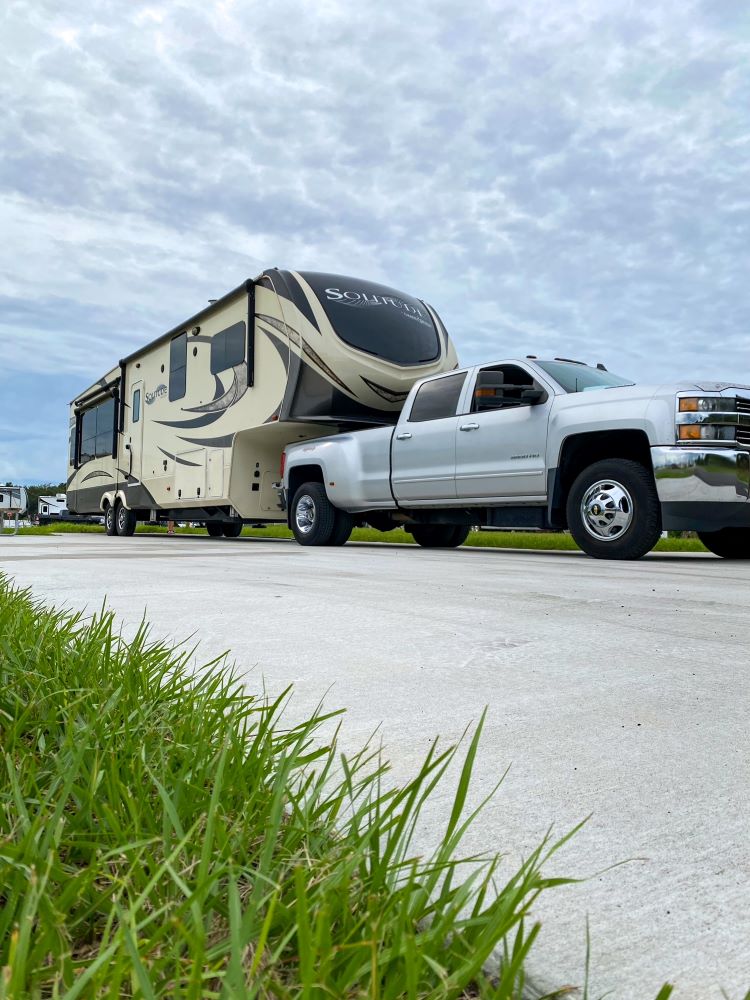
Planning and Budgeting for Full-Time RVing
Creating A Realistic RV Living Budget
When planning for a full-time RV lifestyle, it is essential to create a realistic budget that will cover all necessary expenses.
Full-time RV living costs may vary depending on factors such as the size of the RV, location, utilities, and activities.
The average cost monthly for full-time RV living can range from as low as $2000 to as high as $8,500.
Some individuals can even manage to live on a minimal budget of around $1,900 per month by finding free spots to park their rig or becoming a camp host.
RV Living Expenses:
- Campground fees or monthly site rentals
- Fuel costs
- RV maintenance and repairs
- Health insurance, RV insurance, and roadside assistance
- Loan Payments & Credit Cards
- Utilities (electricity if staying in one location monthly)
- Eating out and groceries
- Communication costs (internet, phone, TV)
- Entertainment and activities
- Propane, laundry, mail fees
- Camping memberships
Adjusting Expenses to Match RV Lifestyle
Full-time RVing offers flexibility and opportunities to adjust expenses to match the desired lifestyle.
Tips To Balance Expenses:
- Campground choices: Opt for low-cost or free camping, such as boondocking or staying in national forests and public lands when possible.
- Travel slowly: Moving frequently increases fuel expenses, so opt for longer stays in each location.
- Save on utilities: Utilize solar panels to generate electricity for boondocking and use electric appliances over propane to lower utility expenses.
- Shop and cook smart: Find affordable grocery stores and plan meals to minimize food expenses.
- Take advantage of discounts: Use memberships and rewards programs to save on RV parks, fuel, attractions, and shopping.
Savings and Long-Term Planning During The Full-Time RV Lifestyle
Full-time RV living offers potential cost savings over traditional housing expenses if managed carefully.
However, developing a long-term plan for savings and future goals is essential, such as switching back to a stationary lifestyle or retirement.
Get your Reservations Tips FREE GUIDE HERE!
Full Time RV Travel Versus Stationary RV Living
It’s important to mention that the cost of traveling full time in an RV is very different than living in an RV stationary within a campground or on privately owned land. The focus of this article is traveling full time.
Stationary living in an RV full-time cost is more predictable with more fixed expenses.
There are also fewer repairs often required for long-term stays since your RV isn’t bouncing down the road.
You will have your monthly campground rental plus electricity, but the rest of the utilities are often included.
However, you won’t have the extra cost of gas and activities like you would when traveling.
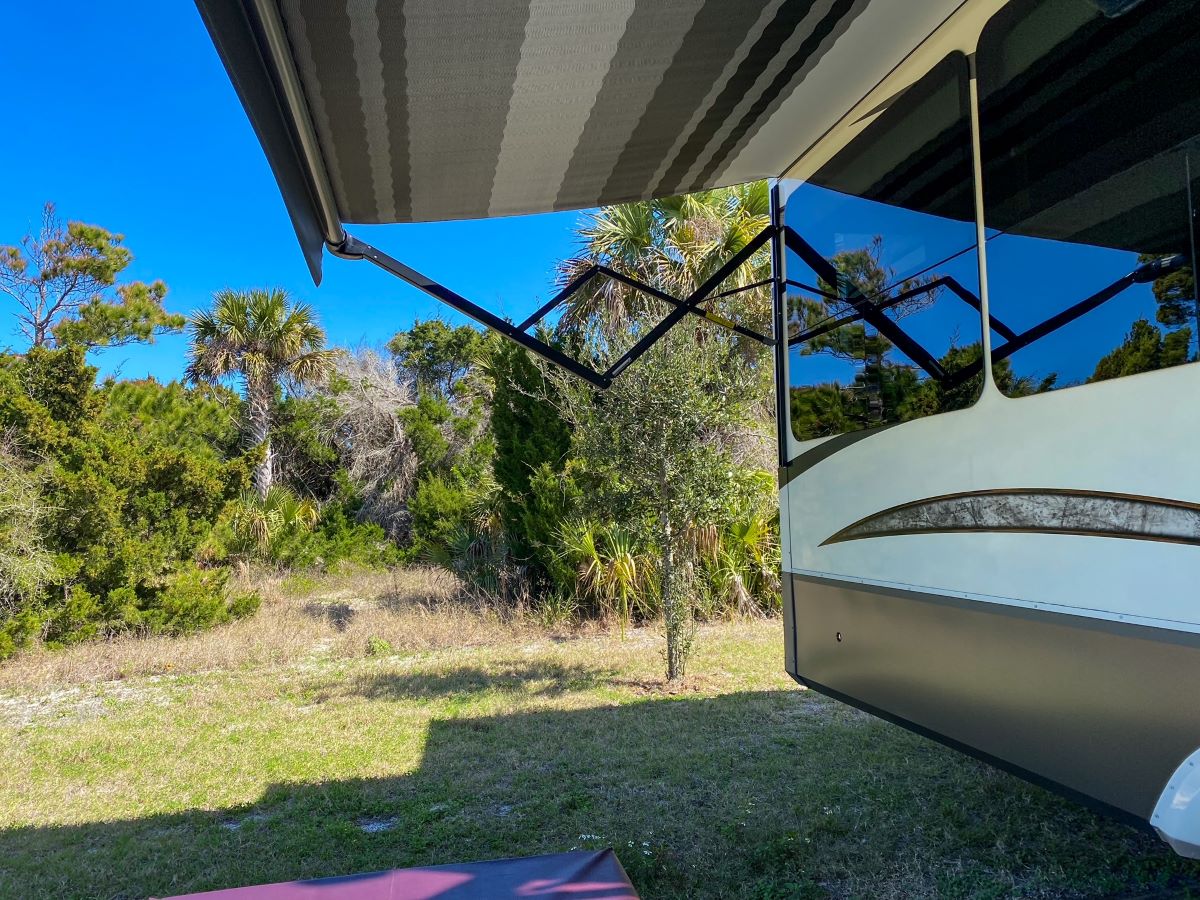
What Does A Month Of RV Living Cost? Example Of Our Personal Monthly Expenses In 2024
Below is an example showing our detailed expenses for one month of RV traveling.
We typically spend between $5800-$7200 as full-time RVers per month for our family of 3.
We usually stay in cheaper membership campgrounds and state parks versus private RV parks. We enjoy inexpensive or free outdoor activities as a family.
Our family rarely eats out due to food allergies, but we spend a lot more on groceries since we eat gluten-free and organic.
Another way we save money is by being a 1 car family. We only have the large dually truck that hauls our fifth wheel RV.
We used the proceeds from selling our home to purchase our RV and truck, so there are no loans or vehicle payments in our monthly expenses.
Our Cost Of Living Full Time In An RV Per Month For January 2024
Variable Expenses
- Diesel Gas $520 (stayed within Florida)
- Groceries $1862 (GF & organic)
- Eating Out $270
- Campgrounds $1,160 (stayed in Thousand Trails membership parks and state parks)
- Activities $277 (mostly outdoor activities)
- Homeschool Supplies $60
- RV/Truck, Repairs, Maintenance, Hardware $375
- Loan Payments $0
- Laundry $25 (when on sewer, we use our onboard washer/dryer)
- Propane $0
- Postage & Mail Service $20
- Pet $298
- Medical Appointments & Presciptions $0
- Personal Items, Supplements, Clothing, Amazon, Toiletries, Paper Goods, etc. $732
Fixed Full-Time RV Living Expenses
- Cell Phone: T-Mobile phones as hot spots (3) $185
- Internet: Starlink $150
- Health Insurance + Dental: ACA Plan $387
- Life Insurance: $81
- Truck & RV Insurance: Progressive truck $200, Progressive RV $101
- Truck or RV Payment $0
- Thousand Trails & Trails Collection Annual Membership Dues Paid Monthly $77
January 2024 RV Living Total: $6,869
Will your monthly cost on the road look like ours? Doubtful! Every traveler has different monthly expenses.
Your food budget for groceries will likely be much less, your gas will probably be higher, and you may have loan payments and the cost of insurance and gas for a second vehicle.
You will also notice that the repairs and maintenance are average in this month’s example.
Our most expensive repair month on the road so far was $3400. That month had a truck repair, an RV repair, and a need for new RV tires.
Always budget for unexpected repairs and expenses each month!
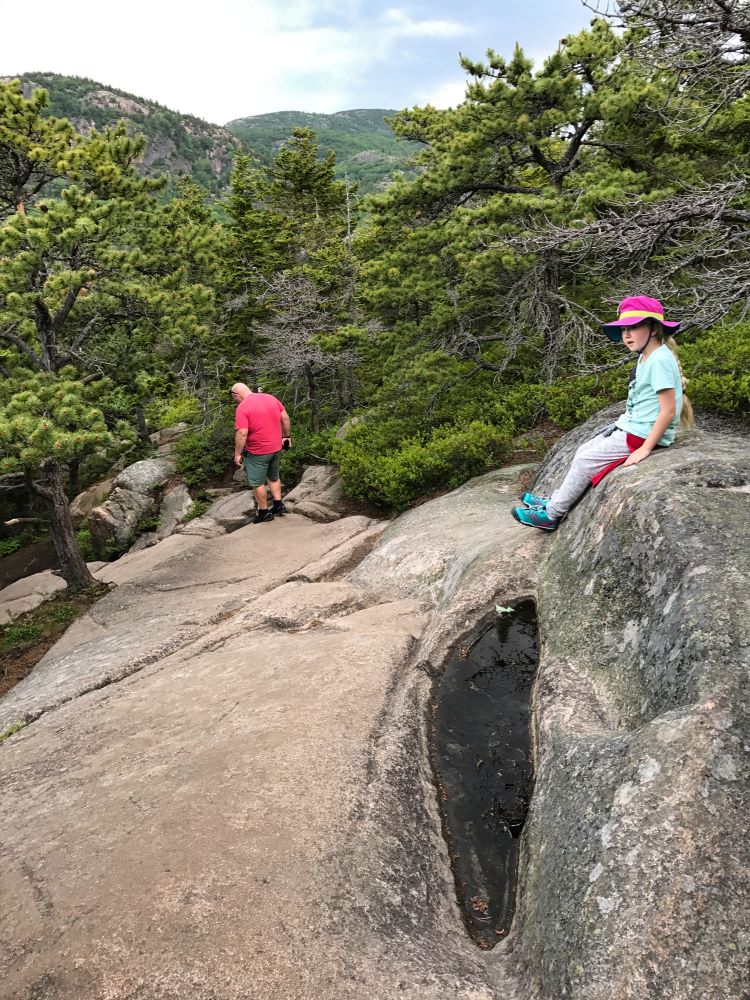
FAQs How Much Does Full-Time RVing Cost
How much does it cost to live full time in an RV?
The cost to live full time in an RV can vary greatly depending on the types of places you wish to stay, what type of RV you have, how far and fast you wish to travel, and your activities. Monthly expenses can range from as low as $1,800 to over $5,500.
Is An RV A Good Investment To Live In?
An RV can be a good investment to live in for traveling experiences. If you already own an RV, then you can often save money RV living. The steep depreciation is why RVs aren’t an overall good financial investment.
Can I Afford To RV Full Time?
A great way to know if you can afford to RV full time is to work out the expenses on paper and then add at least $500 per month for unexpected monthly expenses. You also want to have a savings account to cover larger repairs and extended hotel stays if your RV is in the shop.
Is Full Time RV Living Cheaper Than Living In A House?
Full time RV living can be cheaper than living in a house. It depends on where you like to stay, what kind of RV you have, how fast/far you travel, and the types of activities you enjoy on the road. For our family, the cost of RV living most months is similar to living in a house, however we are from the Midwest, where house prices are reasonable.
How Do I Budget For Full Time RVing?
To budget for full time RVing:
- Make a list of all possible expense items with the estimated cost for each.
- Look at example budgets that others RV living provide as we do in this article.
- Add RV repairs and unexpected expenses each month on top of those costs of at least $500 or more to be safe.
How Can I Live RV Life For Cheap?
To live RV life for cheap, avoid loans by using the sale of your belongings or house to pay cash for a used RV. Then consider being stationary in your RV at an inexpensive campground with monthly rates. While you will have to pay for electricity, this is often cheaper than mortgage payments or rent, and the rest of the utilities are usually included.
What are costs associated with changing RV sites and moving to different locations?
The biggest cost associated with changing RV sites is gas and overnight campground fees. The faster you travel, the higher your gas will be per month as well as higher campground costs for shorter stays. We change RV locations every 2-3 weeks to have time for daily living and exploring.
How do they handle healthcare and health insurance while on the fulltime?
We have used both Healthshare ministries and ACA plans for health insurance while RV living. We utilize telehealth appointments to see doctors wherever we are as well as urgent care in emergency situations. In the winter months we travel slower and catch up on dental and other healthcare appointments.
What are the start-up costs if someone wants to get into RV living?
The initial start-up costs to get started in RV living includes purchasing the initial equipment such as an RV, tow vehicle or vehicle to tow behind the RV. You will also need RV must haves such as a fifth wheel hitch, tow dolly, or tow bar. The start up cost varies depending on the type of RV you choose and if you go with new or used.
What Will Full-Time RVing Cost You?
I hope this article has provided you with a better idea of how much the RV living lifestyle will cost. While full-time RVing can offer freedom and adventure, it also requires careful financial planning.
Everyone spends a different amount while RV living. However, by understanding the potential costs involved and making informed choices, you can embark on an exciting journey as full time RVers while maintaining financial stability.
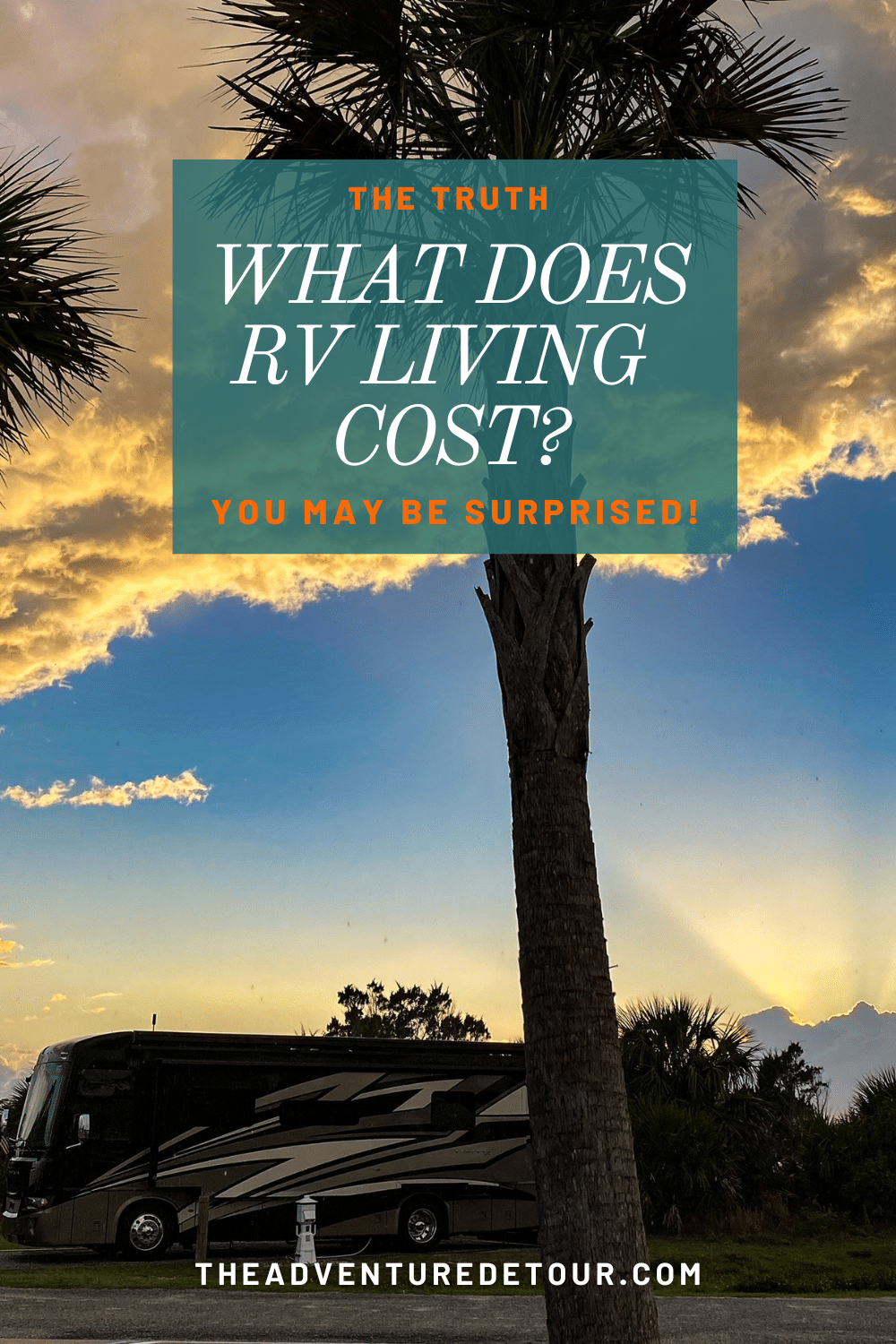
Scott and Van of The Adventure Detour are travel writers focusing on RV travel, family outdoor travel, national parks travel, and hiking. They have been full-time RV living and traveling across the US since 2015. In 8 years of full-time RVing, they have visited 38 national parks so far with the ultimate goal to see them all. They work as digital nomads while roadschooling their daughter nicknamed Sissy. On the way to all 50 states, they have visited and hiked through 42 states so far. The travel bucket list is forever growing!

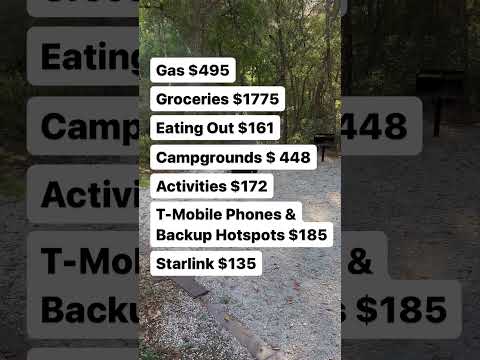
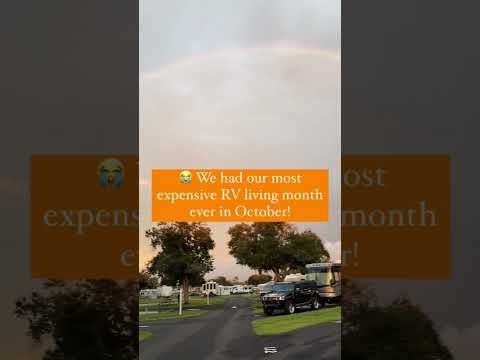

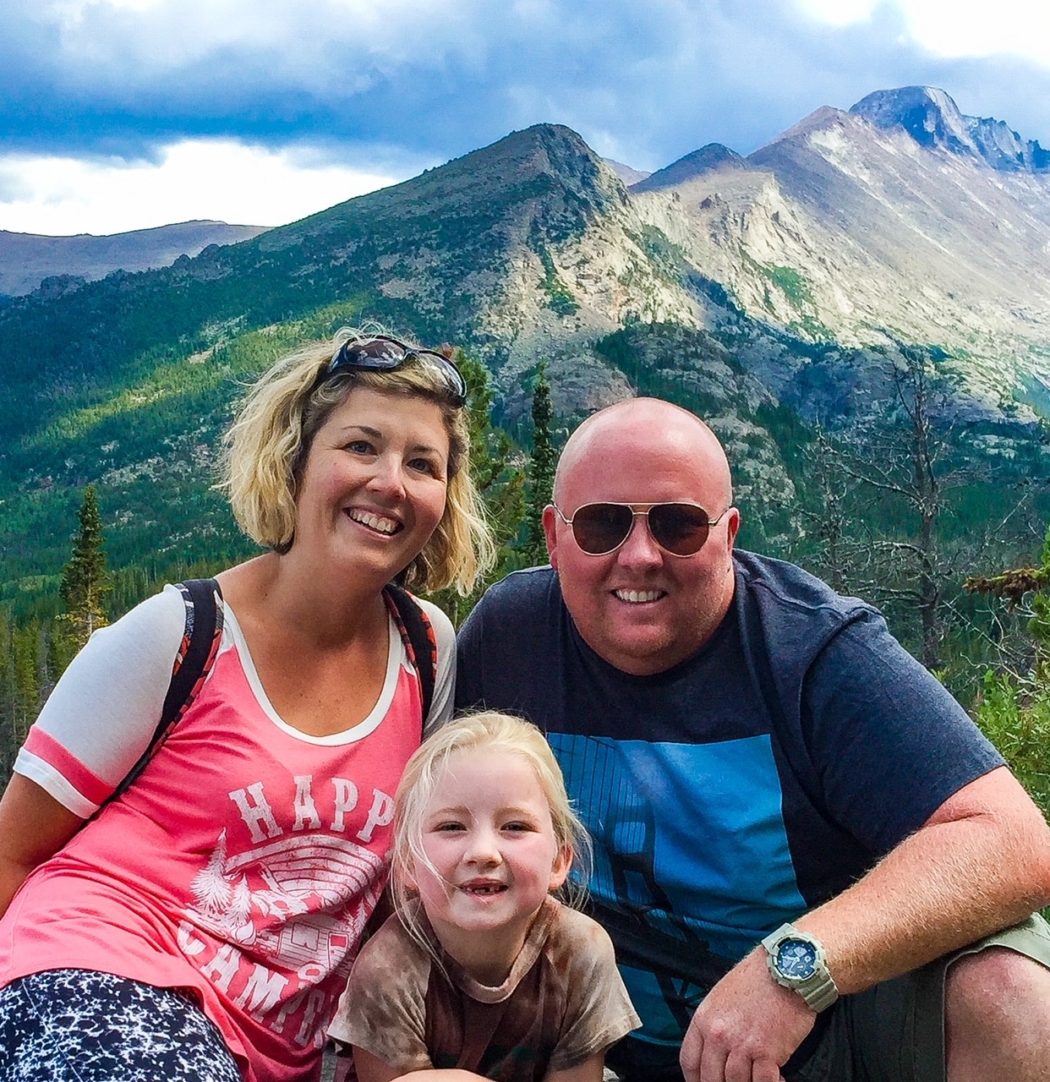
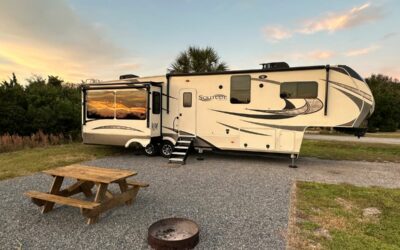
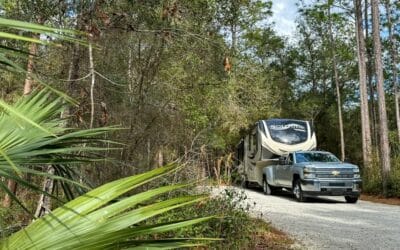
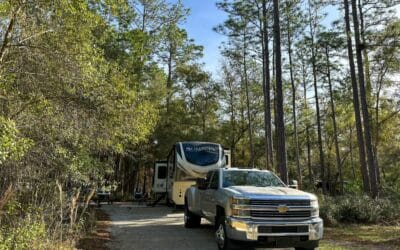

0 Comments